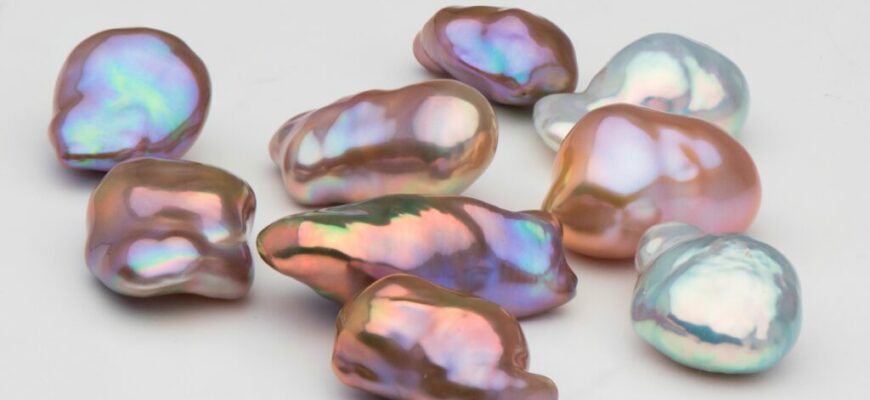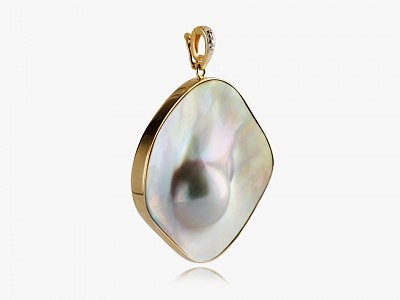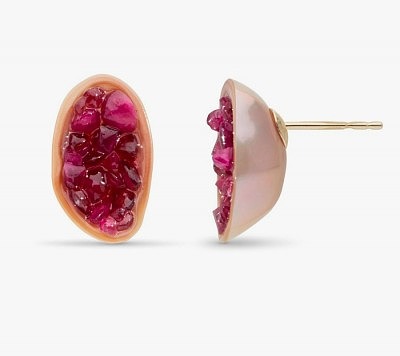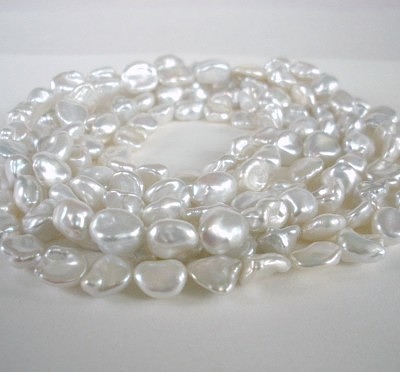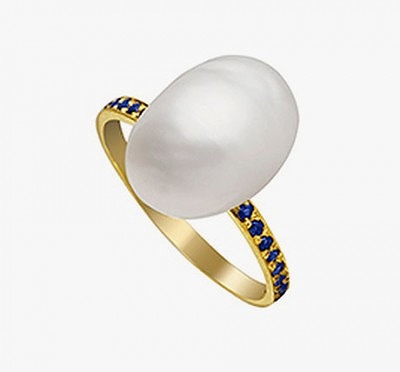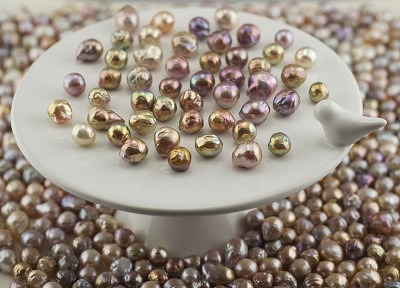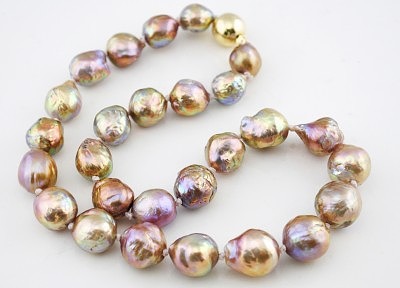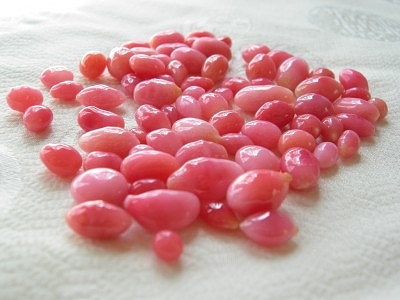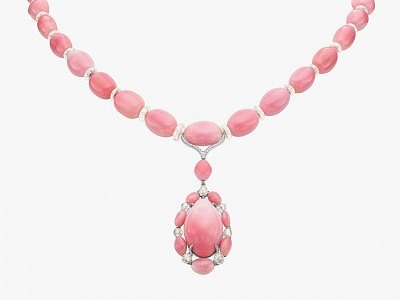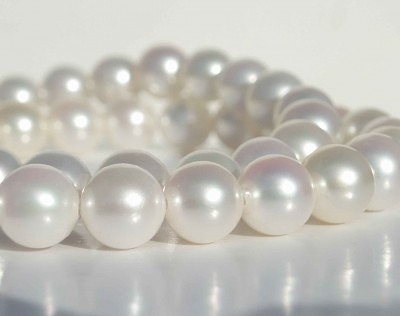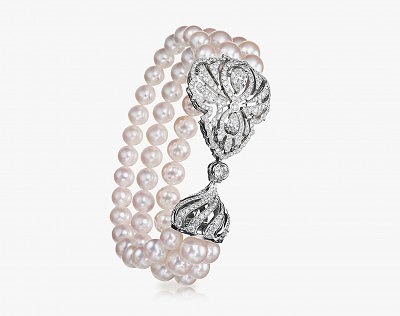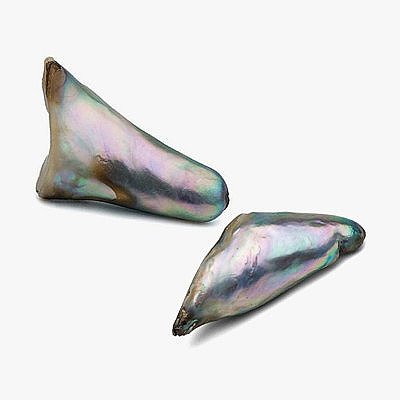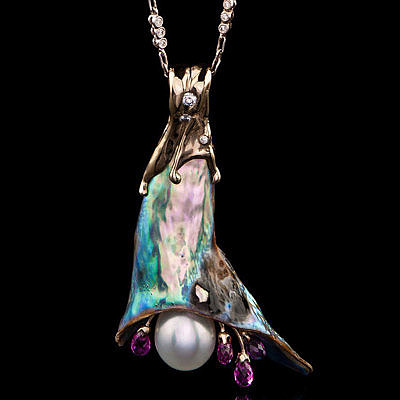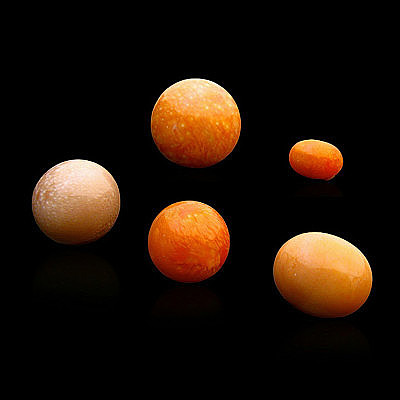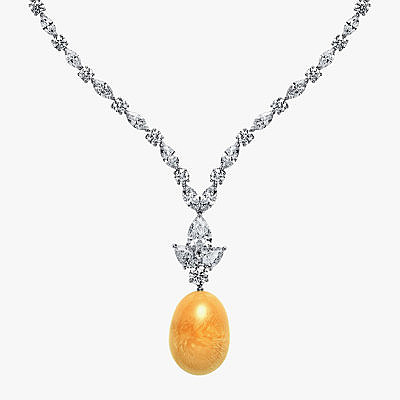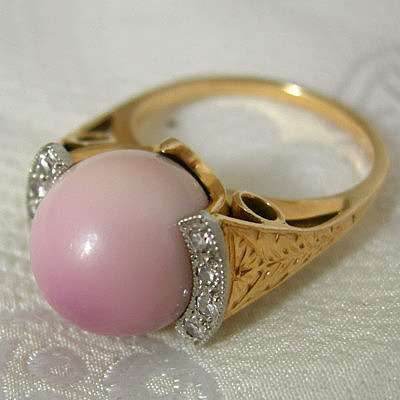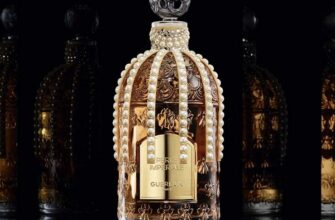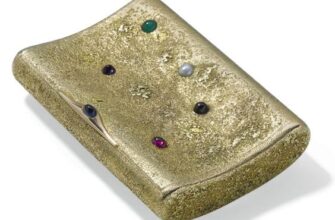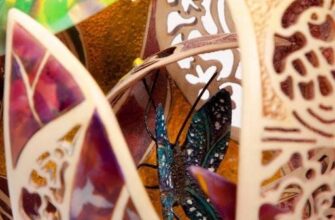Pearls are one of the most amazing and beautiful creations of nature. Born in the depths of the seas and rivers, he took his place among the most valuable gems. But not everyone knows what an amazing variety pearls can offer, how many types of it exist in the world. We will try to talk about the most famous and popular.
Baroque pearls or Baroque pearls
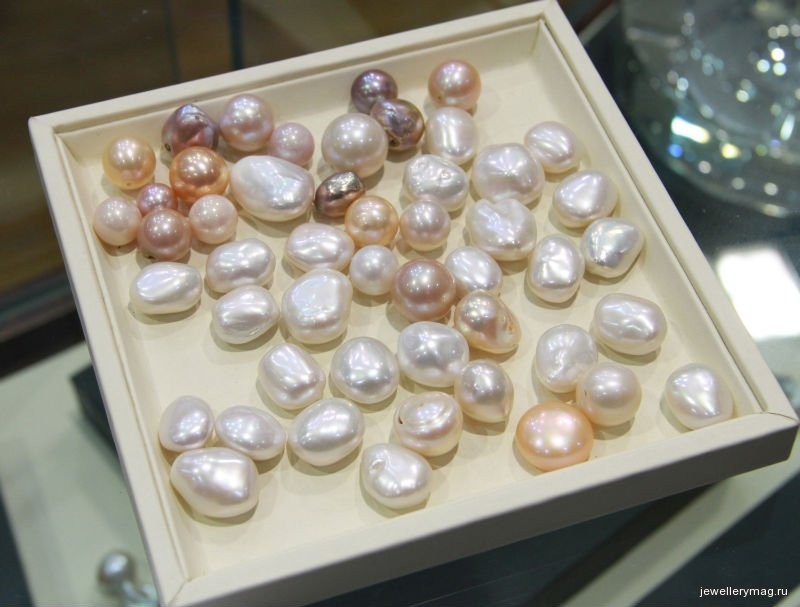

This is the general name for pearls that have an irregular original shape, regardless of their place of origin. Due to its unusualness and exclusivity, it is highly valued among many jewelry designers. Instead of the classic ideal ball, baroque pearls can resemble a drop, disk, cylinder, pear.
Particularly distinguished are the so-called paragons - pearls that have the outlines of animals, people's faces, bird wings, wolf fangs, etc. They have always been endowed with mystical properties and worn as talismans and amulets. In addition to their unusual shape, baroque pearls are often distinguished by a ribbed pattern on the surface, similar to that left by sea waves on the sand.
Each pearl is unique and inimitable, so the demand and price for them remain at a consistently high level.
Pearl blister
In some cases, the formation and growth of the pearl occurs on one of the inner sides of the shell. This leads to the fact that in the place of its growth, the mother-of-pearl layer is not formed. Such pearls are less valued and are subjected to additional processing for use in jewelry.
Souffle pearls
A delicious name for pearls was invented by Jack Lynch, a recognized expert in this field. Such a comparison very accurately reflects the essence of the technology for its production. Translated from French, soufflé means “to inflate”, “pump up”. In this case, the subject of "inflation" is the pearl sac of the oyster after the removal of the formed pearl from it.
A dry, earthy material is placed inside the bag of a soufflé pearl, which, gradually swelling with moisture, stretches it. The oyster continues to deposit mother-of-pearl around the new core, and in this way pearls of impressive size are grown, the quality and price of which depend on the thickness of the mother-of-pearl layer.
Pearl Keshi
Keshi means "seed" in Japanese. These are pearls that can form in the shells of sea and freshwater oysters when they reject the main nucleus. Despite the fact that the oyster did not accept an artificial implant, there is a place in the pearl bag where the process of growing mother-of-pearl layers occurs on small particles that have fallen into the shell naturally from the outside, so such pearls are considered 100% natural.
Pearl Kasumi
Real Kasumi is grown in Japan on Lake Kasumi-ga-ura. It is produced by oysters bred by selection in the 90s of the last century. Distinctive features of these pearls are teardrop shape, bright iridescent shine, large size - up to 2 cm, a variety of colors. The popularity of Kasumi pearls is due to the growing number of analogues and fakes on the market.
pearl conch
Giant single shell clams conch live in the Caribbean Sea. When the shell is opened, it dies, so conch pearls are not cultivated. Caribbean pearls are difficult to confuse with others, outwardly they look more like small stones. Conch clams are not capable of isolating mother-of-pearl, so their pearls do not have an iridescent sheen, but this does not make them less beautiful.
akoya pearl
The famous Japanese pearl is born in the special bivalve mollusks Pinctada or in Japanese "akoya-kai", hence its name. Among other types, this pearl is especially distinguished by its regular ball shape (it is these pearls that are most valued in jewelry and are most often used in jewelry) and light pure colors from mother-of-pearl white to pale pink and silvery green.
Basically, the size of akoya pearls reaches 6-8 mm, more is extremely rare. High-quality pearls are classified as AAA or AA and are romantically called "floral".
abalone pearl
Abalone is one of the very rare varieties of pearls. It is born in the single-valve mollusc of the same name, which is also called haliotis or "abalone". Due to the anatomical features of the mollusk, abalone pearls are extremely difficult to cultivate.
Abalone is mined mainly in the USA on the coast of California and in Mexico. However, this type of pearl is often found in other countries, such as Japan, Australia, Korea, New Zealand, South Africa and Thailand.
The abalone mollusk is truly ancient, the age of the species is about 30 million years. But its main feature is an incredible palette of shades, which shimmers with the inner surface of the shell - the pearl born in it can boast of the same play of colors. Blue, green, lilac, beige, orange, pink abalone pearls are highly valued in the jewelry market - and the brighter the color, the more expensive.
It is worth noting another feature of this variety - the vast majority of pearls found in their shape resemble a horn or shark tooth, and they are not perfectly round at all. For the same reason, the closer the gemstone is to the correct shape, the more valuable it is. Good abalone pearls with a diameter of 3-4 millimeters can cost from $300 and up.
Melo-melo pearls
This type of pearl is very similar to conch - both of them do not have a mother-of-pearl layer, and therefore many do not classify them as pearls at all. However, one of the largest gemological institutes GIA, when issuing a certificate for a gemstone, officially refers melo (or melo-melo, as it is also called) to pearls, or adds a clarification that it is “not mother-of-pearl”.
The source of pearls is a huge melo-melo sea snail. It can be found off the coast of Thailand, Vietnam, as well as Myanmar and Cambodia. The palette consists of shades of orange, yellow, red and brown, among which the former are valued above the rest.
Melo pearls, although very rare, are quite large. The largest pearl in the world is considered to be almost 400 carats (about 80 grams). It belonged to the last emperor of Vietnam, Bao Dai, and is called the Sunrise Pearl for its resemblance to the bright sun at sunrise.
The most expensive melo pearl sold for $488 at Christie's in 1999. The dimensions of the bright orange gem were 23×19 millimeters.
Melo does not lend itself to cultivation and is very sensitive to sunlight - with prolonged exposure, the color of pearls turns pale, so it is recommended to wear jewelry with it only in the evening.
pearl quahog
Another variety of “non-mother-of-pearl” pearls is the extraordinary quahog. Pearls are born in the shells of the mollusc Venus mercenaria. And, unlike concha and melo, which still show a slight sparkle on their surface, quahog is almost matte.
The color palette of quahog pearls is not very extensive: they are mostly “stones” of white, gray, brown, black. The most valuable (and, of course, rare) are soft purple and lilac pearls of round or teardrop shape. However, the chance of finding one is less than one in a million. And although they are still mined along the Atlantic coast of the United States, this is often done for the sake of eating shellfish.
In addition to the varieties of pearls listed above, the golden pearls of the South Seas are of great value and popularity. Its incredible radiance and geometrically correct shape of the ball make each such pearl a real decoration of any piece of jewelry.
By the way, do not forget that although any jewelry with pearls is beautiful for its impeccable immortal beauty, it requires very careful care. Therefore, be sure to read about how to clean your pearls yourself and not harm them.
